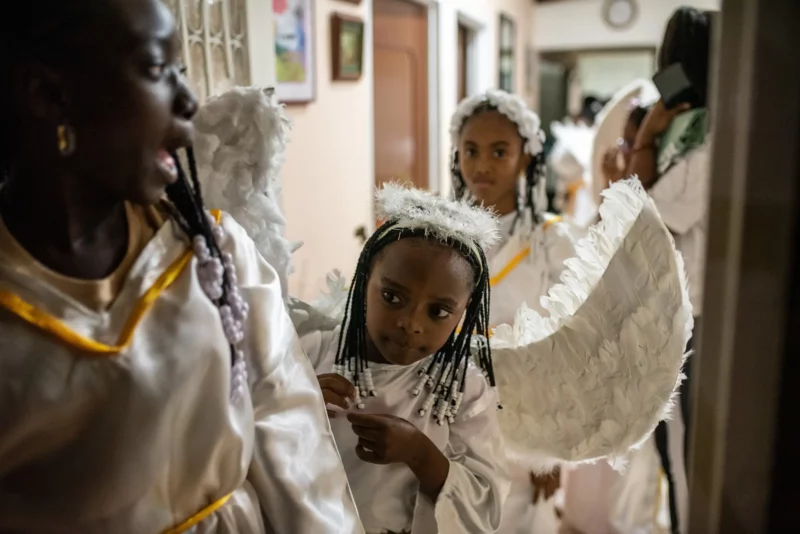Why This Town Has Celebrated Christmas in February for Nearly 200 Years
Share
Explore Our Galleries
Breaking News!
Today's news and culture by Black and other reporters in the Black and mainstream media.
Ways to Support ABHM?
by Genevieve Glatsky, New York Times
The Afro-Colombian residents of Quinamayó have followed a unique tradition: celebrating Christmas 40 days after the traditional date, a custom begun under the subjugation of slavery.

The Christmas trees, twinkling lights, and red and green streamers were up, and the main street was lined with tents selling sausages and popcorn, as horse-drawn carts clopped by.
It looked like a typical Christmas festival street scene — except it was February.
Every year, Quinamayó, a town of about 6,000 in southwestern Colombia, observes a tradition that dates back to the era of slavery and has persisted as a way to turn a history of oppression and suffering into a celebration of joy.
In the early 1800s, the town’s Afro-Colombian population was enslaved and forced to work through December, attending to slaveholders’ holiday festivities. So Christmas was celebrated 40 days after the traditional birth date of Jesus — the amount of time that the Virgin Mary is said to have rested after delivery, and right after the end of harvest season.
Learn about another winter holiday celebrated by the Black community.











Comments Are Welcome
Note: We moderate submissions in order to create a space for meaningful dialogue, a space where museum visitors – adults and youth –– can exchange informed, thoughtful, and relevant comments that add value to our exhibits.
Racial slurs, personal attacks, obscenity, profanity, and SHOUTING do not meet the above standard. Such comments are posted in the exhibit Hateful Speech. Commercial promotions, impersonations, and incoherent comments likewise fail to meet our goals, so will not be posted. Submissions longer than 120 words will be shortened.
See our full Comments Policy here.